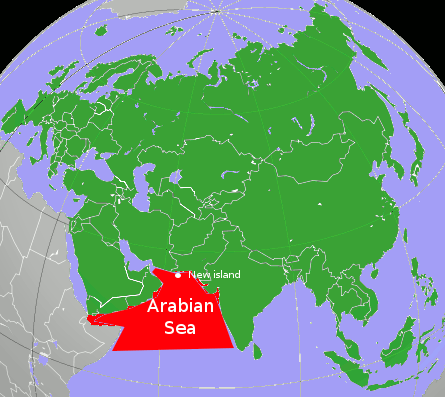
Circle the area on this map

B. The Arabian Sea covers nearly 1.5 million square miles of the Indian Ocean, which in turn is part of the world ocean that covers over 70 percent of the earth's surface. The world's oceans in order of size are the Pacific, Atlantic, Indian, Southern and Arctic. Seas are smaller sections of the oceans except for inland seas which are bounded by land.
A. Microbes know as methanogens break down decaying organic materials – dead plants and animals – and produce methane. Natural gas is primarily methane that has been trapped in the earth.
C. The earth's surface is comprised of tectonic plates that drift extremely slowly over the earth's mantle. When plates collide, one plate slides under the other and sinks into the mantle in a process called subduction. In the Markan Zone, the Indian, Arabian and Eurasian tectonic plates collide in a zone stretching from Pakistan to Iran.
D. Usually, the term monsoon refers to the rainy phase of a seasonally-changing wind pattern, although technically there is also a dry phase of the phenomenon.